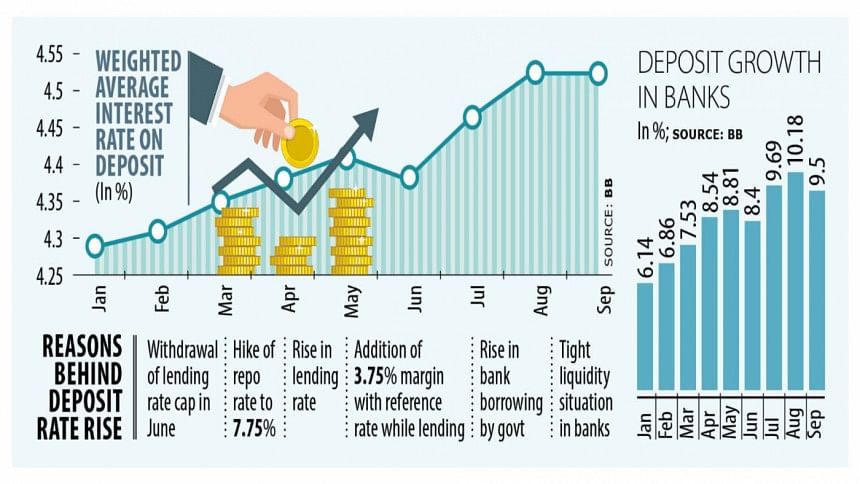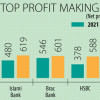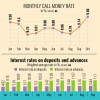Rising deposit rates bring cheers to savers

The interest rates on deposits are on the rise in keeping with lending rates as banks look to woo funds to ride out the liquidity crunch following the withdrawal of the lending rate cap and the hike in the policy rates.
Although the central bank initiatives, aimed at making loans costlier to fight the elevated level of inflation, have increased the cost of borrowing, it has started to yield better returns for savers.
In fact, the interest rates on all kinds of deposits have been rising since the withdrawal of the lending rate ceiling in June. The recent policy rate hikes have pushed up the rates higher.
In September, the weighted average interest rate on deposits stood at 4.52 percent, up from 4.38 percent in June, figures from the central bank showed. It was 4.09 percent in September last year.
"The deposit rate has increased sharply due to a spike in the lending rate," said Mirza Elias Uddin Ahmed, managing director of Jamuna Bank. Currently, the maximum interest rate on deposits is as high as 9.50 percent.
The call money market has also seen a spike in the interest rate, leading to a rise in deposit rates.
Yesterday, the average call money rate was 8.36 percent and the interest rate for the 14-day call money rate was 10.75 percent, according to the Bangladesh Bank.
The central bank on Sunday hiked the policy rate to 7.75 percent, the eighth increase in the past 19 months as inflation shows no sign of falling. But Ahmed doubts whether it would be effective.
Average inflation rose 9.93 percent in October, way above the central bank's target of 6 percent for the current fiscal year.
The BB also increased the margin by 25 basis points to 3.75 percent that banks can add to the SMART (Six Months Moving Average Rate of Treasury Bills) rate while disbursing loans.
Thus, the maximum lending rate will be 11.18 percent in the banking sector because the reference rate stands at 7.43 percent.
Implementing a hike in lending rates takes some time, but the deposit rate has started to increase after the announcement of the rate increases, said Ahmed.
"Some Shariah-based banks face liquidity shortage. On the other hand, there is no liquidity shortage in some banks. This mismatch has created pressure in the market."
Speaking to The Daily Star, a private banker based in Dhaka said his bank is offering as high as 9 percent deposit rates.
"This, however, depends on the volume of the funds and the tenure of the fixed deposits. The higher the volume, the higher the rate is. The same is also true if depositors agree to park funds for a longer period."
Another private banker who is posted in Jamalpur said his bank has raised the deposit rate to attract funds.
The rising deposit rates have accelerated the deposit growth at banks: the deposit growth stood at 9.5 percent in September, up from 8.4 percent in June, showed central bank data. The growth was 6.14 percent in January.
Anis A Khan, a former chairman of the Association of Bankers Bangladesh, welcomed the latest policy rate hike.
"This will also increase the liquidity in the market because savers who hold funds at their disposal will return to banks because of the good return."
The former managing director of Mutual Trust Bank also said the currency outside the banking system is decreasing due to the rise in the deposit rates.
In September, the currency outside banks stood at Tk 2,53,505 crore, down from Tk 2,91,913 crore in June, BB data showed.

 For all latest news, follow The Daily Star's Google News channel.
For all latest news, follow The Daily Star's Google News channel. 






Comments